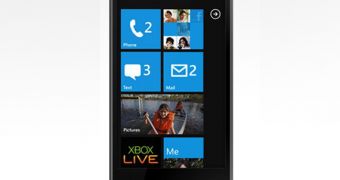Microsoft's new Windows Phone 7 mobile operating system comes to the market with a series of pretty appealing capabilities, including native support for Exchange ActiveSync, offering users the possibility to set up email accounts on their devices fast and easy.
In line with the idea of keeping users connected at all times with the things that matter the most for them, Microsoft built the new mobile OS with native support for these protocols, offering synchronizing of e-mail, calendar events and contacts with Exchange Server.
Thus, business customers can enjoy the convenience of being up to date at all times with their e-mail or calendar, all straight from a smartphone that can easily ensure the success of their business.
“Exchange ActiveSync is native to Windows Phone 7, allowing people to set up and access multiple e-mail accounts and calendars on their phone,” says Adam Glick, senior technical product manager, Exchange Server at Microsoft.
Through pairing Windows Phone 7 and Exchange, Microsoft offers a complete suite of products for customers always on the go, while offering a deep integration with the infrastructure and application policies of various companies.
“We’re always aiming to understand productivity better than any other company, and to exceed our customers’ expectations on the smartphone,” Glick continues.
“This is a pivotal moment in mobile phone technology history, with the innovation coming to market with Exchange ActiveSync, smartphone manufacturers and customers are the productivity winners.”
However, the availability of Exchange ActiveSync on mobile is not restricted to Microsoft's own mobile operating system.
Apple, HTC, Nokia, Palm, Samsung and other mobile phone makers already licensed Exchange ActiveSync (EAS) for use on their mobile platforms and smartphones, proving that the protocols nave become standards for mobile messaging synchronization.
Glick also notes that Exchange is not restricted to mobile usage, as it can be accessed from PCs too, via Outlook or browsers, and that the idea is to make the solution available on as many devices as possible, including on rival platforms.
“It’s important that we broadly license Exchange ActiveSync to other companies and competitors in the industry,” Glick says, adding that the move would “increase customer choice and helps people use Exchange across a wide range of devices.”

 14 DAY TRIAL //
14 DAY TRIAL //